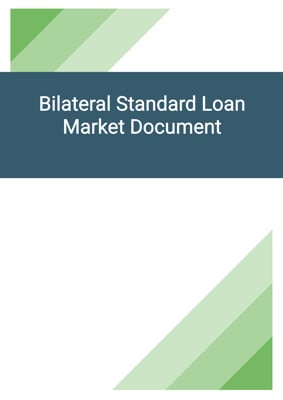How to Tailor the Document for Your Need?
01
Create Document
Fill in the details of the parties. You can click the "Fill with Member’s Information" button to complete it with information saved to your account.
02
Fill Information
Please fill in any additional information by following the step-by-step guide on the left hand side of the preview document and click the "Next" button.
03
Get Document
When you are done, click the "Get Document" button and you can download the document in Word or PDF format.
04
Review Document
The document should be signed by the authorised signatory (or directors of a company) and witnessed to complete the formality.
Document Preview
Document Description
The document titled 'Guarantee to Lender relating to Mortgage Loan' is a legally binding agreement between the guarantor and the lender. It is intended to highlight the importance of the document and its significance in securing a loan for the borrower. The guarantee serves as a form of assurance to the lender that the debt will be paid when it becomes due and payable by the borrower.
The document begins with an introduction, stating the parties involved in the agreement, namely the guarantor and the lender. It also mentions the purpose of the guarantee, which is to obtain the lender's loan to the borrower. The guarantee is intended to take effect as a deed, indicating its formal and binding nature.
The document includes a section for interpretation, providing definitions for key terms used throughout the guarantee. These definitions clarify the meaning of terms such as 'additional loan,' 'borrower,' 'borrower liability,' 'business day,' 'debt,' 'expenses,' 'guarantee,' 'guarantor liability,' 'loan,' 'mortgage,' 'mortgage conditions,' 'other security provider,' 'person,' and 'property.' These definitions ensure that both parties have a clear understanding of the terms used in the guarantee.
The guarantee outlines the consideration for the agreement, stating that the guarantor agrees to provide the lender with a guarantee and indemnity in exchange for the lender granting or continuing to grant the loan to the borrower. The guarantee section specifies that the guarantor guarantees the payment of the debt when it becomes due and payable by the borrower. It also states that the guarantor agrees to pay the debt and the expenses upon written demand from the lender.
The document includes a provision for indemnity, stating that the guarantor is liable to the lender as if the guarantor were the principal debtor for the whole amount of the debt. This means that the guarantor has a primary and direct obligation to pay the debt, regardless of their status as a guarantor. The indemnity provision emphasizes the guarantor's responsibility for the debt and ensures that the lender can recover the debt from the guarantor.
The guarantee sets a limit on the guarantor's liability, stating that the guarantor will not be liable for any additional loan unless they have given their written approval or later agree in writing to be liable for it. This provision protects the guarantor from being held responsible for loans they did not explicitly agree to guarantee.
The guarantee and indemnity are stated to be independent of any other guarantee or security held by the lender. This means that the lender can choose which security to enforce and the order of enforcement. The lender is not obligated to enforce any other security or take any other steps before enforcing the guarantee.
The guarantee includes provisions regarding the postponement of the guarantor's rights, deductions from other credit balances and lien, the lender's claim against the borrower, the continuing nature of the guarantee and indemnity, the creation of a suspense account, the lender's actions or omissions not affecting the guarantor's liability, the effects of bankruptcy or insolvency laws, payments without deduction, the application of payments, the binding effect of signing the guarantee, the change of the lender's organizational structure, joint and several liability, evidence of the borrower liability and the guarantor liability, interest on expenses, the guarantor's provision of correct information, notices and demands, other general matters, disclosure of information, the lender's power to assign or transfer their rights and obligations, the unenforceability of certain terms, termination, payment in other currencies, and the exclusion of rights under contracts for third parties.
The guarantee concludes with a choice of law and jurisdiction clause, stating that the guarantor agrees to the jurisdiction of the courts mentioned in the clause and that any judgment or order of those courts is conclusive and binding. The guarantor confirms their understanding of the guarantee and indemnity and acknowledges the importance of obtaining independent legal advice before signing the guarantee.
Each section of the document provides detailed information and clarifies the rights and obligations of the guarantor and the lender. The guarantee is a crucial document in securing a mortgage loan and protecting the interests of both parties involved.
How to use this document?
1. Read the guarantee carefully and ensure that you understand its contents and implications.
2. Provide accurate information: Fill in the required details of the guarantor and the lender, including their names, addresses, and contact information. This ensures that both parties are correctly identified.
3. Understand the borrower liability: Familiarize yourself with the borrower's obligations and liabilities under the loan agreement. This will help you understand the extent of your guarantee and indemnity.
4. Be aware of the loan terms: Review the terms of the loan agreement, including the loan amount, interest rate, repayment period, default interest rate, and late charges. This will give you a clear understanding of the financial obligations involved.
5. Comply with payment demands: Be prepared to pay the debt and the expenses upon written demand from the lender. Failure to comply with payment demands may result in legal consequences.
6. Seek legal advice: It is advisable to seek independent legal advice before signing the guarantee. A legal professional can provide guidance on the implications of the guarantee and ensure that your rights and interests are protected.
7. Keep records: Maintain copies of the signed guarantee and any correspondence related to the loan. These documents may be important for future reference or in case of any disputes.
8. Notify the lender of any changes: Inform the lender in writing of any changes to your contact information within 7 days. This ensures that the lender can reach you if necessary.
9. Understand the lender's rights: Be aware that the lender has the right to enforce the guarantee and take actions such as using credit balances, offsetting debts, exercising liens, or selling assets to recover unpaid sums.
10. Comply with legal requirements: Ensure that you comply with any legal obligations, such as making payments without deduction of taxes or other charges, as required by law.
11. Keep confidentiality: Maintain the confidentiality of any personal or credit information disclosed during the loan process, in accordance with applicable data privacy laws.
12. Stay informed: Stay updated on any changes to the loan agreement, the borrower's circumstances, or the lender's organization structure that may affect your liability under the guarantee.
13. Termination of the guarantee: If you wish to terminate the guarantee, provide the lender with one month's written notice. However, note that your liability will continue for amounts due up to the date of termination.
14. Seek professional advice: If you have any doubts or concerns about your obligations under the guarantee, consult a legal professional for guidance and clarification.
Not the right document?
Don’t worry, we have thousands of documents for you to choose from:




















